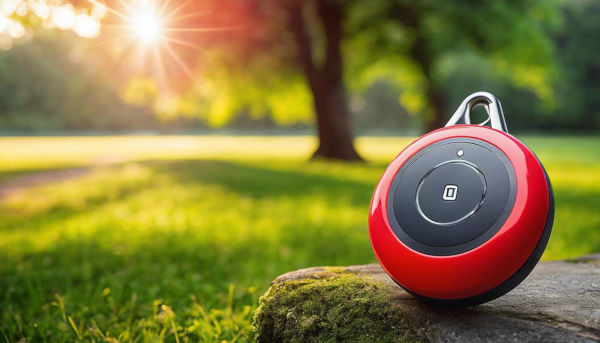Are Personal Alarms Really Effective? The Truth About Their Usefulness

Yes, personal safety alarms are an effective deterrent in many situations. Their loud sirens attract attention and can scare off potential attackers. However, their effectiveness depends on key factors such as sound level, ease of use, and proper deployment. In this guide, we’ll break down how personal alarms work, their advantages, and when they may not be enough on their own.
What Are Personal Safety Alarms?
Pink Personal Safety Alarm with Additional Flashlight Function
A personal alarm is a small, handheld device designed to emit a loud noise (typically 120-140 decibels) when activated. The purpose is to:
- Startle an attacker and create a distraction.
- Draw attention from bystanders.
- Give the user a chance to escape.
These alarms are commonly attached to keychains, bags, or clothing for quick access and are especially popular among women, students, and elderly individuals seeking non-violent self-defense tools.
Are Personal Alarms Effective?
✅ Advantages of Personal Alarms:
| Feature | Benefit |
|---|---|
| Loud Sound (120-140 dB) | Can deter attackers and alert others. |
| Compact & Discreet | Easy to carry, attach to a keychain, or store in a bag. |
| Non-Lethal | Safer for users who don’t want to carry a weapon. |
| Legal Everywhere | Unlike stun guns or pepper spray, personal alarms are legal in all states. |
| Easy to Use | Simply pull the pin or press a button to activate. |
Pull to Activate Lipstick Alarm
❌ Limitations of Personal Alarms:
| Concern | Explanation |
|---|---|
| Won’t Stop a Determined Attacker | While loud, some attackers may not be deterred by noise alone. |
| Reliant on Bystanders | Effectiveness depends on others being nearby to respond. |
| Battery Life | Some models require regular battery checks to ensure functionality. |
Verdict: Personal alarms work best as part of a layered self-defense strategy. They are highly effective in attracting attention but may not physically stop an attack. Combining them with pepper spray or a stun gun can enhance your personal safety.
How to Use a Personal Alarm Effectively
- Attach it to an Accessible Location – Keep it on your keychain, purse, or backpack strap for quick activation.
- Use in High-Risk Situations – Walking alone at night? Keep your hand on it, ready to activate if needed.
- Activate it Immediately – If you sense danger, pull the pin or press the button to startle the attacker and draw attention.
- Combine With Movement – While the alarm is sounding, run toward well-lit areas or other people.
Comparing Personal Alarms to Other Self-Defense Tools
| Tool | Effectiveness | Pros | Cons |
|---|---|---|---|
| Personal Alarm | ⭐⭐⭐⭐☆ (Great for drawing attention) | Loud, legal, non-lethal | Doesn’t physically stop an attacker |
| Pepper Spray | ⭐⭐⭐⭐⭐ (Best for stopping attackers) | Disables an assailant temporarily | Requires aim, can be affected by wind |
| Stun Gun | ⭐⭐⭐⭐☆ (Effective close-range) | Causes pain and immobilization | Requires physical contact |
| Tactical Flashlight | ⭐⭐⭐⭐☆ (Versatile tool) | Can blind attackers, used as a weapon | Not as loud as a personal alarm |
Related: Best Self-Defense Products for Women
FAQs About Personal Alarms
Do personal alarms work against all attackers?
Not always. While they can deter opportunistic criminals, some attackers may ignore them. That’s why pairing an alarm with other safety tools is a smart strategy.
What is the best personal alarm to buy?
Look for an alarm with at least 130 decibels, a long battery life, and an easy activation mechanism.
Are personal alarms better than pepper spray?
They serve different purposes. Alarms are for attracting attention, while pepper spray is for stopping an attack.
Where can I buy a reliable personal alarm?
Check out our top-rated personal alarms for a selection of high-quality safety devices.
Final Thoughts: Should You Carry a Personal Alarm?
If you're looking for a non-lethal, easy-to-use, and legal self-defense tool, a personal alarm is a great addition to your safety gear. However, for maximum protection, consider pairing it with pepper spray or a tactical flashlight.
Browse Our Alarm Collection: Personal Alarms at TBOTECH
Add your comment now!
Post Comment

